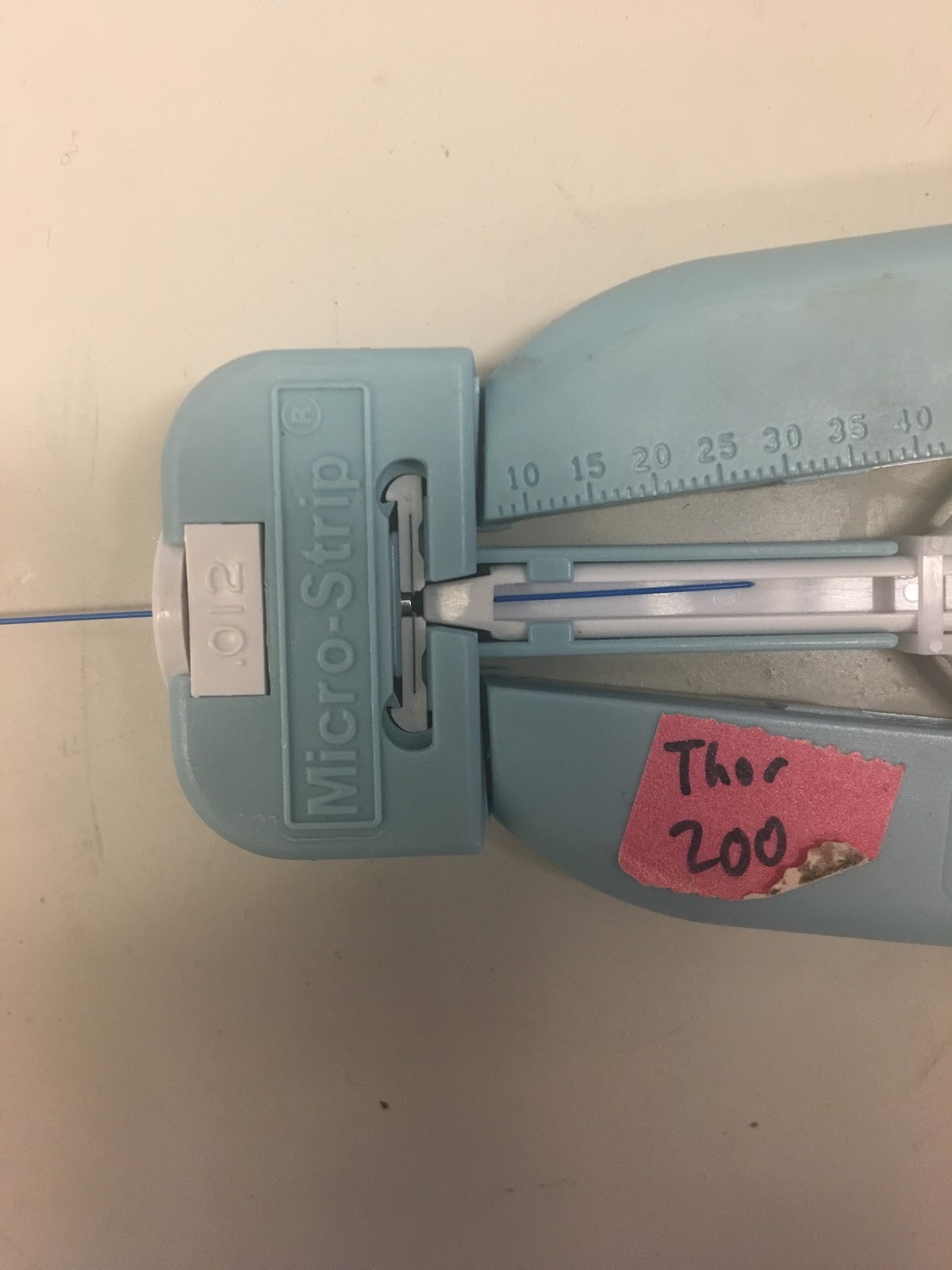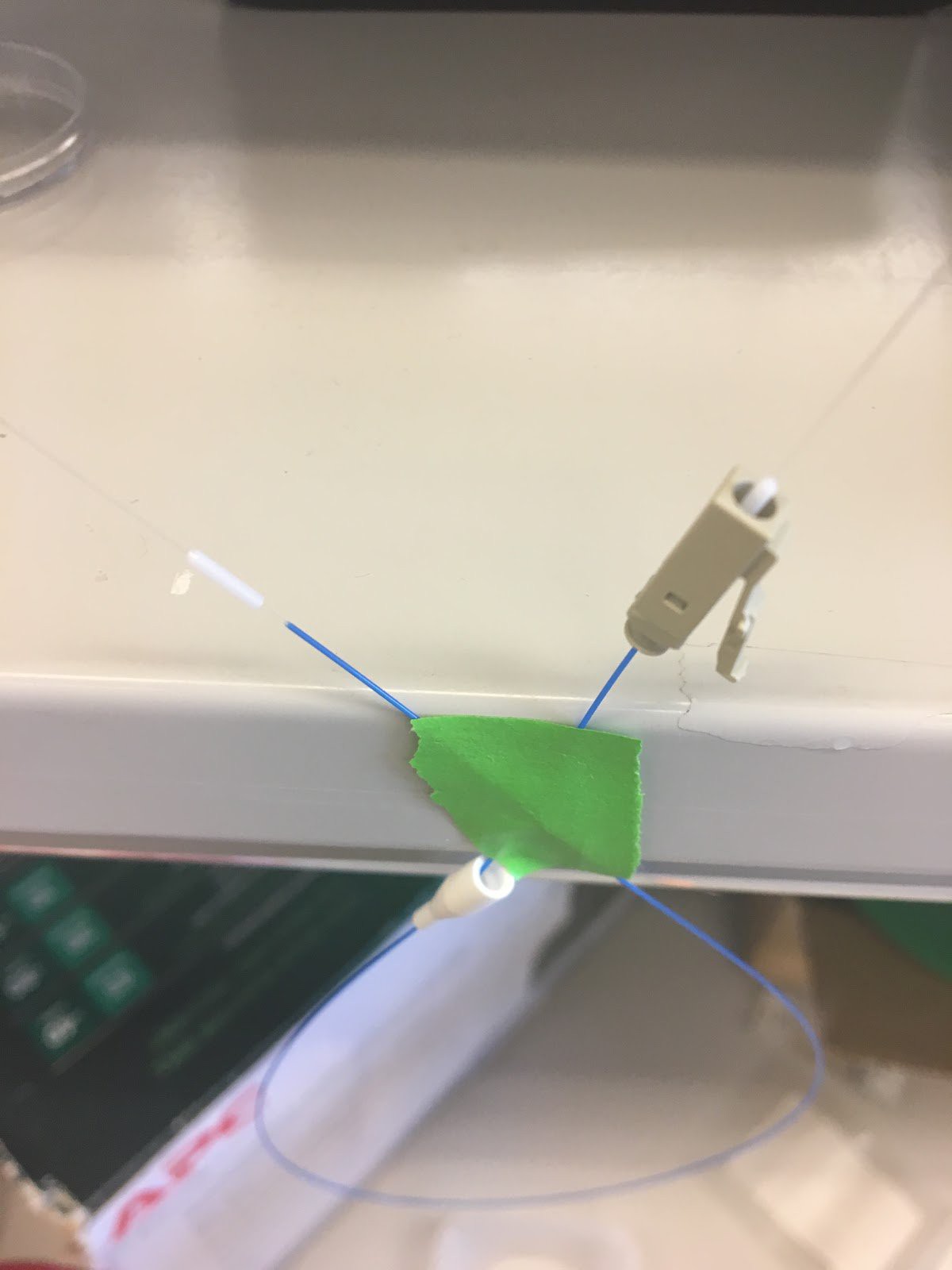-
1Measure the Fiber
Measure out and cut the necessary length of fiber needed, making sure to leave about an inch of extra length on each side for stripping (We use a 20 inch segment in this protocol).
-
2Strip the Fiber
Most optical fibers come with an outer buffer layer. Strip approximately 0.5-1 inch of this buffer off each side of the fiber using a Micro-Strip Mechanical Precision Stripper.
-
3Setting Up the Input and Output Connectors
On one end of the fiber, insert an LC Multimode Connector and Boot, stopping at the buffer line on the fiber. On the other end, attach a 1.25mm ceramic ferrule. Note: These are the specifications used for this specific protocol, by all means can the connectors and ferrules be interchanged to fit specific requirements.
In order to secure the ferrule and connector, hang the fiber right side up using a wall or shelf such that the ferrule and connector are pointed upward.
Apply a thin layer of epoxy on the stripped section of both sides of the fiber and carefully slide the ferrule and connector down until they reach the buffer line. Be sure to wipe off any excess epoxy that builds up, and let sit for 5 minutes to dry.
Once dried, use a diamond-edged razor to knick the ends of excess stripped fiber from both sides and simply flick off. Try not to saw through the fiber, as this may cause the core to crack.
Attach the boot and LC connector, wrap and store for easy access!
![]()
-
4Testing the Fibers
Before using a fiber, it needs to be tested to make sure it is transmitting light at an effective power level. This requires the use of an optical power meter to assess the output of the fiber. Again, the specific settings and recommended output levels will depend on multiple factors; what kind of light you are transmitting, how powerful your input can be, minimizing signal/noise ratio, et cetera. Be sure to take these into consideration when testing each fiber to make sure they are performing adequately for the task at hand.
It is sometimes helpful to smooth out the ferrule tip of the fiber using anywhere from 60 to 20 grit sandpaper to improve the power output.
Optical Stimulation Fibers
These optical fibers are used for optogenetic testing in various animal studies.




Discussions
Become a Hackaday.io Member
Create an account to leave a comment. Already have an account? Log In.